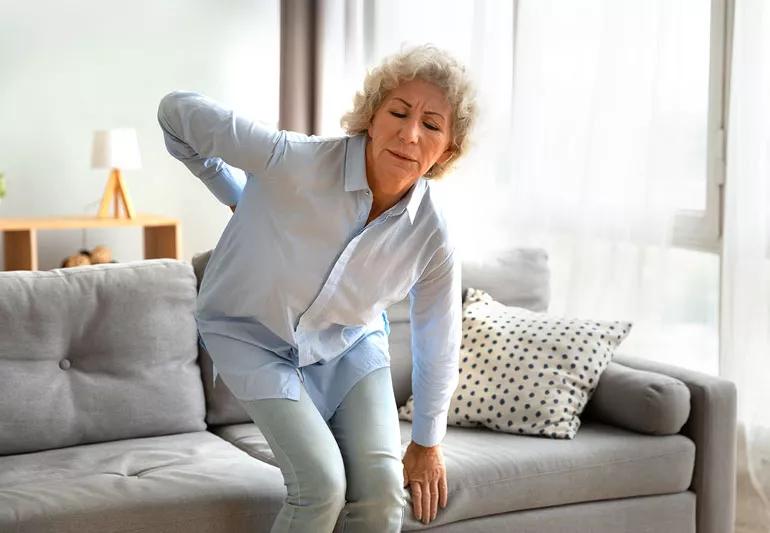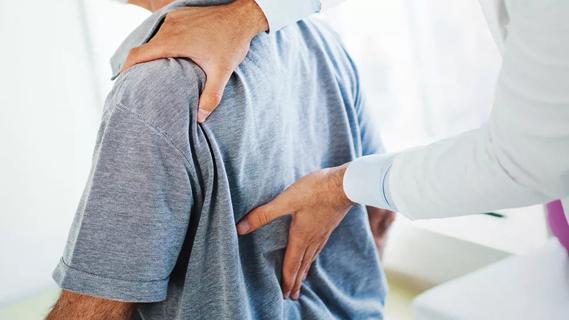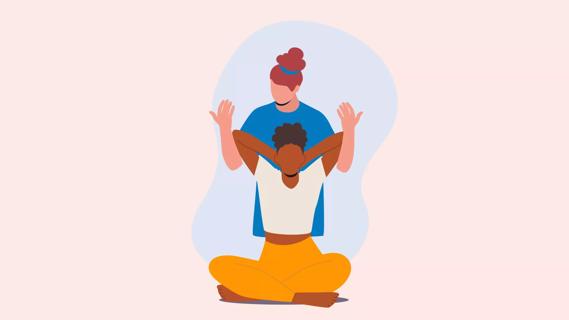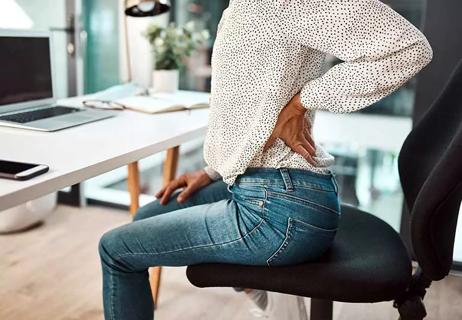How to pinpoint the source of your pain

Back problems can masquerade as hip problems. “There is a lot of overlap,” says hip specialist Trevor Murray, MD. Most pain from hip and back problems is due to ordinary wear and tear on the body.
Advertisement
Cleveland Clinic is a non-profit academic medical center. Advertising on our site helps support our mission. We do not endorse non-Cleveland Clinic products or services. Policy
Surprisingly, hip problems usually produce groin pain on the affected side. That’s because the actual joint of the hip is near the spine.
“Groin pain is a hip issue until proven otherwise,” says back pain specialist Russell DeMicco, DO. “Pain above the belt line is not a hip issue.”
The most common cause of hip pain is osteoarthritis of the hip joint. You may have hip arthritis if:
Avascular necrosis, or AVN, is a serious condition marked by death of hip bone at the joint. The pain is usually worse and far more constant than in osteoarthritis. “People come to me saying, ‘My hip is killing me,’” says Dr. Murray.
Most lower spine problems are caused by a herniated disk that presses on nerves in the spinal column. This produces the pain known as sciatica, which can be felt in the hip. You may have a herniated disk if pain:
If you have night sweats, a history of cancer, or pain that is not relieved by lying down (“night pain”), see your doctor — the problem may be more serious.
Advertisement
Some people develop what Dr. DeMicco calls a “double whammy” — problems in both the hip and lower back. “It’s not surprising, since both osteoarthritis and spinal changes are more common with each passing decade,” he explains.
If the source of your pain is difficult to pinpoint, seek help from a hip or spine specialist. The specialist may order an injection of lidocaine, or they may perform diagnostic/therapeutic hip injection under fluoroscopy or ultrasound.
If the problem is the hip, this will numb the hip joint and relieve symptoms immediately. “If the pain does not improve, we know we’re barking up the wrong tree,” says Dr. Murray. The same technique can rule out or confirm back pain.
Advertisement
Learn more about our editorial process.
Advertisement

Drinking alcohol can cause nerve pain, dehydration and weight gain, which can all lead to back pain

Your sleep position, immobility, mattress and underlying conditions can all cause morning back pain

Rest may be all you need to get rid of running-related lower back pain

It’s always a good idea to let a healthcare provider know about any back pain you’re experiencing, especially if it results from trauma or persists longer than three months

From physical and biofeedback therapy to nerve ablations and blocks, there are many nonsurgical options for managing back pain

Rest, physical therapy, acupuncture and nerve blocks are just a few ways to find relief

Get moving, use cold packs, and try yoga and stretches to ease back pain

Back spasms, shingles and disk conditions can all feel like a burning sensation

If you’re feeling short of breath, sleep can be tough — propping yourself up or sleeping on your side may help

If you fear the unknown or find yourself needing reassurance often, you may identify with this attachment style

If you’re looking to boost your gut health, it’s better to get fiber from whole foods